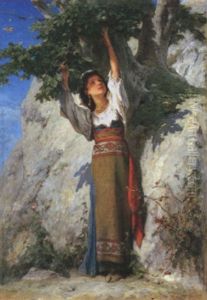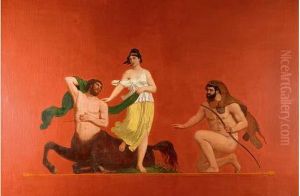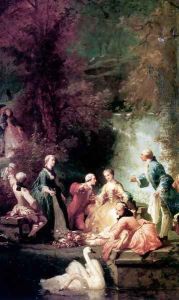Adolphe Jourdan Paintings
Adolphe Jourdan was a French painter born on October 31, 1825, in Nîmes, France. He is best known for his works in the genre of genre painting, portraiture, and historical scenes. His artistic journey started at a young age, showing an early inclination towards the arts. Jourdan's education in art began in his hometown, but he soon moved to Paris to further his studies and immerse himself in the vibrant art scene of the French capital.
In Paris, Jourdan trained under the guidance of prominent artists of the time, which helped refine his technique and artistic vision. He was particularly influenced by the French academic art movement, which emphasized classical themes, precise technique, and a polished finish. Jourdan's works often depicted scenes from daily life, historical events, and classical mythology, portrayed with a sense of realism and attention to detail.
Throughout his career, Jourdan exhibited his works in various salons and galleries, gaining recognition and accolades for his contributions to French art. His paintings were celebrated for their vivid portrayal of subjects and the delicate handling of light and shadow, characteristics that made his works stand out among his contemporaries.
Jourdan's artistic legacy includes not only his paintings but also his influence on the younger generation of artists. He was known to be a dedicated mentor, sharing his knowledge and skills with aspiring painters. Despite the changing trends in the art world during his lifetime, Jourdan remained committed to the academic traditions, which he believed were essential to achieving artistic excellence.
Adolphe Jourdan passed away on August 11, 1899, in Paris. Today, his works are held in various art collections around the world, where they continue to be appreciated for their beauty and craftsmanship. Jourdan's contribution to the 19th-century French art scene has secured him a place among the notable artists of his era, remembered for his dedication to the classical ideals of beauty and harmony.


























